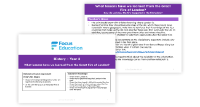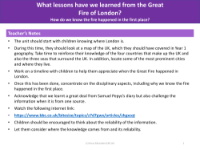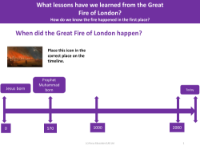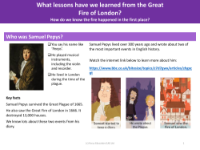How do we know the fire happened in the first place? - Presentation
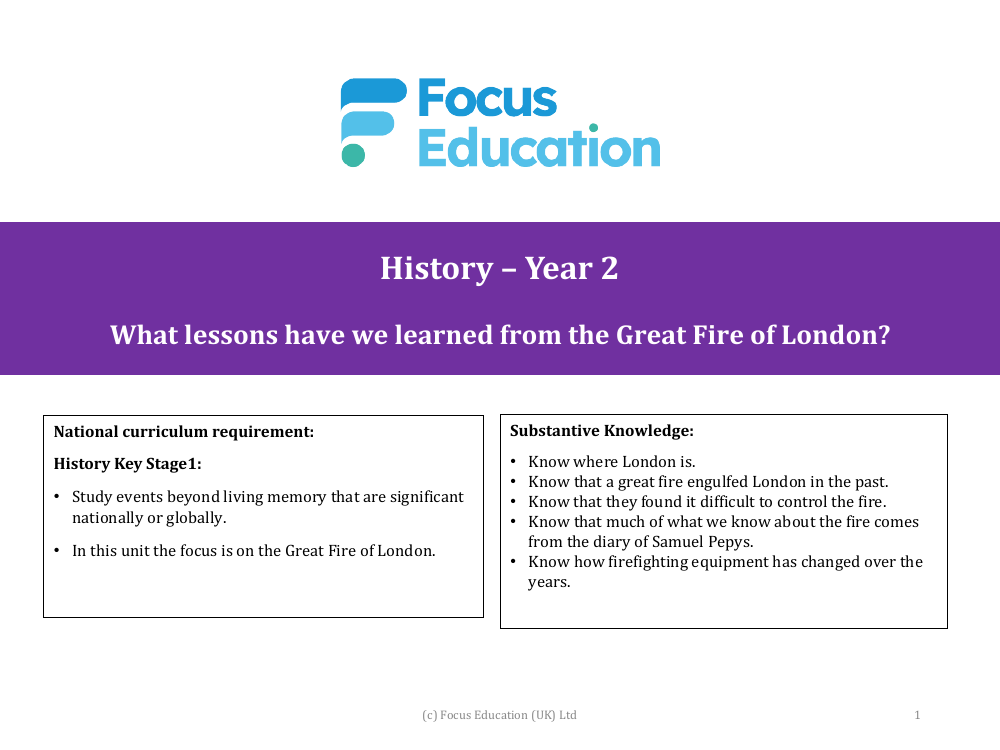
History Resource Description
The Great Fire of London, a significant historical event studied in Key Stage 1, provides a vivid example of an incident beyond living memory that greatly impacted the nation. Students learn about the city of London and the catastrophic fire that swept through it in the past, which proved challenging to control. The knowledge of this event primarily comes from the diary entries of Samuel Pepys, offering a first-hand account of the disaster. Additionally, the curriculum explores the evolution of firefighting equipment over the years, helping children understand how responses to such emergencies have changed and improved.
In Year 2, pupils delve deeper into the lessons learned from the Great Fire of London, questioning how we know the fire occurred, the reasons for its rapid spread and prolonged duration, and the ongoing challenges with different types of fires today. They also investigate how the fire led to improvements in the capital. The curriculum emphasises disciplinary knowledge, including chronology, causation, historical enquiry, interpretation, and significance. Students learn to differentiate between past and present, understand the use of timelines, and evaluate the reliability of historical sources. The study of the Great Fire encourages critical thinking about evidence from the past, such as eyewitness accounts, artefacts, and the importance of basing ideas on such evidence. Vocabulary pertinent to the topic includes terms like Pudding Lane, where the fire began, and Samuel Pepys, whose diary writings are crucial for understanding the event.
